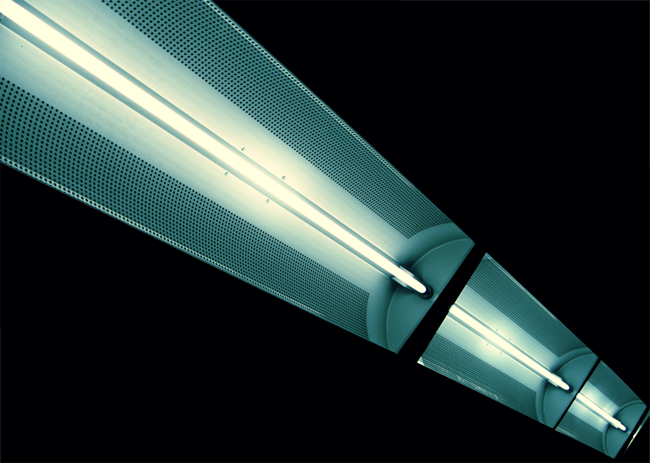You should turn off your fluorescent lamps if the space is not going to be occupied for more than a few minutes (3-5 minutes is a good rule of thumb). The modern electronic ballast and T8/T5 lamp combination do draw a higher level of current during startup, but it only lasts for a fraction of a second, which is negligible compared to normal current requirements of the lamps.
Leaving fluorescent lights on when you leave an area is one of those myths from the ’70s that has somehow survived to this date. In fact, occupancy sensors are routinely used with fluorescent fixtures to turn the lights off when no one is in a room.
A bigger concern here may be the impact of frequent on/off cycles on the lamp’s life. This does shorten the lamp life somewhat. However, leaving the lights on all the time also reduces the lamp life. In fact, it has been shown that even though occupancy sensors reduce the lamp life as measured in total hours, they actually extend the replacement cycle of the lamps because the lamps operate only during those hours that are needed.
According to the Electric Power Research Institute, not only does turning off fluorescent lights reduce lamp replacement costs, it also reduces electric bills. For example, turning off an F40 fluorescent lamp for only one-half hour a day can save about $4.00 (based on 8 cents/kWh) in energy over the life of the lamp. In fact, the money saved by this routine is typically more than the price of a new lamp.
Source: Efficiency & Demand Analysis Division California Energy Commission 1516 Ninth Street Sacramento, CA 95825
www.consumerenergycenter.org / myths / FLUORESCENT LIGHTS
 Urban Myth- Leaving A Fluorescent Light Turned On Is Cheaper Than Turning It Off And On
Urban Myth- Leaving A Fluorescent Light Turned On Is Cheaper Than Turning It Off And On


